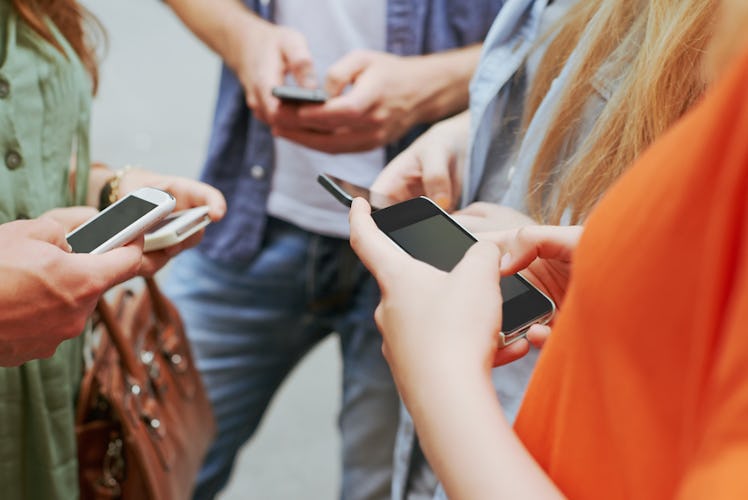
This New App Lets You Send iMessages From Androids, So Goodbye Green Texts
Hallelujah! The day that we've all dreamed of has finally arrived. Your non-conformist, Android-loving friend, significant other, or family member can finally text you without those ugly green bubbles. What a time to be alive. Here's how to send iMessages from Android phones.
Thanks to the weMessage app, we no longer have to deal with green texts, according to Lifehacker. We've all been there: You're making a group chat of people you have plans with (or people you want to share memes with). All of the contacts are blue, blue, blue — OK, looking good. Just one more number and... great, the entire chat just turned that ugly shade of green. No matter what, the Android user is always the one who suffers by either being taken out of the group chat or roasted into the next dimension. But now, those days are behind us. Sort of.
The most important thing to note about weMessage is that it only works if the Android user also has a Mac computer. My friend is an Android user and his personal laptop is a Lenovo, but luckily, he also has a Mac for work — so hopefully you're in a similar situation. The second most important thing to note about the app is that it's called weMessage. OK, so that's not actually super important, but isn't it cute?
So how do you start using weMessage? It's a little bit complicated, but thankfully, its website has a super helpful how-to guide. First, you'll need to install the weMessage software on your computer. This also requires installing the Java SE Development Kit (JDK). OK, slow down a sec — Java?! Basically, Java allows other programs on your computer to run. You may already have it installed. To check, navigate to a Terminal window and type in "java." No luck? No problem. Just download and install the JDK from the Java website.
Next, you'll need to customize your System Preferences to give the software Terminal rights, by moving Terminal to Accessibility. To do so, go to System Preferences > Security & Privacy > Privacy > Accessibility. When you're in Accessibility, click on the lock icon and enter your password. Next, select the "+" sign and locate your Terminal app. Select "open," and it should be added to your Accessibility list. Easy peasy, right?
Once that's done, you're free to download weServer. Open the ZIP file and click on the “run.command” file to launch the program. When it opens, enter your iMessage email (the one connected to your official iMessage account). weServer strongly suggests creating a new password for security. In order to use weMessage on your Android, both your Android and your Mac must be operating on the same Wi-Fi network. You can adjust this limitation with port forwarding, if you want to get really fancy. weMessage offers a guide for that, as well.
Finally, after all of that, you can install weMessage on your Android device. Make sure you have your Mac’s IP address, as well as the login credentials you just used on your computer. All of your contacts should sync with the app, so you can start firing those blue messages off right away.
This all may sound too good to be true, but it's not — for the most part. Gadget Hacks notes one precaution to take when downloading weServer; it is a closed-source application, which means that there is no way to tell if there is something else going on besides what is claimed. Because of this, there is a risk of keylogging or accessing credentials. However, no instances of either violation have been reported thus far, so things appear to be safe... at least for now.
Happy iMessaging!
Check out the entire Gen Why series and other videos on Facebook and the Bustle app across Apple TV, Roku, and Amazon Fire TV.